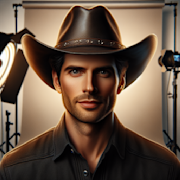Red River (1948)

Released in 1948, “Red River” is a classic Western film directed by Howard Hawks and starring John Wayne and Montgomery Clift. The movie is known for its stunning cinematography, strong performances, and engaging storyline. In this blog post, we will delve into the details of this iconic film and explore why it continues to be a beloved classic in the Western genre.
Plot Overview
The story of “Red River” follows a cattle rancher, Thomas Dunson (John Wayne), who leads a dangerous cattle drive from Texas to Missouri in the aftermath of the Civil War. Along the way, he clashes with his adopted son, Matthew Garth (Montgomery Clift), as tensions rise between the two men. The film explores themes of family, loyalty, and the harsh realities of life in the Wild West.
Cinematography and Direction
One of the standout aspects of “Red River” is its breathtaking cinematography, which captures the sweeping landscapes of the American West in stunning detail. Director Howard Hawks expertly uses wide shots to showcase the vastness of the open plains, creating a sense of scale and grandeur that adds to the epic nature of the story. The film’s use of black and white photography adds a timeless quality to the visuals, emphasizing the rugged beauty of the Western landscape.
Hawks’ direction is also notable for its tight pacing and intense action sequences. The cattle drive scenes are particularly impressive, with the camera capturing the chaos and excitement of the drive as the cowboys navigate treacherous terrain and face off against outlaws. Hawks’ skillful handling of the film’s dramatic moments adds a sense of urgency and tension to the story, keeping viewers on the edge of their seats throughout.
Acting Performances
John Wayne delivers a powerhouse performance as Thomas Dunson, portraying the rugged and determined rancher with his trademark charisma and presence. Wayne’s commanding screen presence dominates every scene he’s in, embodying the mythic figure of the Western hero with conviction and authority. His on-screen chemistry with Montgomery Clift, who plays his conflicted son, adds depth and emotional resonance to their turbulent relationship, making their interactions feel genuine and compelling.
Clift’s portrayal of Matthew Garth is equally impressive, bringing a sense of vulnerability and complexity to the character. The young actor holds his own against Wayne’s formidable presence, creating a dynamic tension between the two characters that drives the film’s emotional core. Clift’s nuanced performance elevates the drama of the story, showcasing his talent as a dramatic actor and earning him critical acclaim for his work in the film.
Themes and Symbolism
“Red River” explores a number of themes that are common in Westerns, including the struggle for power and control, the clash between tradition and modernity, and the harsh realities of life on the frontier. The film’s central conflict between Dunson and Garth reflects the larger theme of generational conflict, as the old ways of the West come into conflict with the changing times of the post-Civil War era.
The cattle drive itself serves as a metaphor for the challenges of the journey through life, with Dunson’s relentless drive to succeed mirroring the struggles of individuals to carve out their own paths in a harsh and unforgiving world. The iconic image of the cattle drive snaking its way across the open plains becomes a symbol of resilience and determination, embodying the spirit of the American frontier and the enduring legacy of the West.
Legacy and Influence
“Red River” has left a lasting legacy in the world of cinema, inspiring countless Western films and television shows in the decades since its release. The film’s iconic performances, breathtaking cinematography, and timeless themes have cemented its status as a classic of the genre, earning it a place in the pantheon of great American films.
Over the years, “Red River” has been celebrated for its influence on the Western genre, with filmmakers like Sergio Leone, Clint Eastwood, and Quentin Tarantino citing it as a major inspiration for their own work. The film’s enduring popularity continues to captivate audiences of all ages, proving that the story of Thomas Dunson and Matthew Garth still resonates with viewers more than 70 years after its original release.
In conclusion, “Red River” is a timeless classic that deserves its reputation as one of the greatest Western films ever made. With its stunning visuals, powerhouse performances, and compelling storytelling, the film remains a must-see for fans of the genre and lovers of great cinema alike.

Alberto Miller
Movie Fanatic
More From Classics Authority Movies

Movie
Cinematic Time Travel: Exploring Classic Films Set in Different Eras

Movie
Bringing Up Baby (1938)

Movie
Echoes of Eternity: Classic Films with Enduring Themes

Movie
Mad Max: Fury Road (2015)

Movie
Anatomy of a Murder (1959)

Movie
The Quintessential Classic Westerns: Riding into the Sunset





